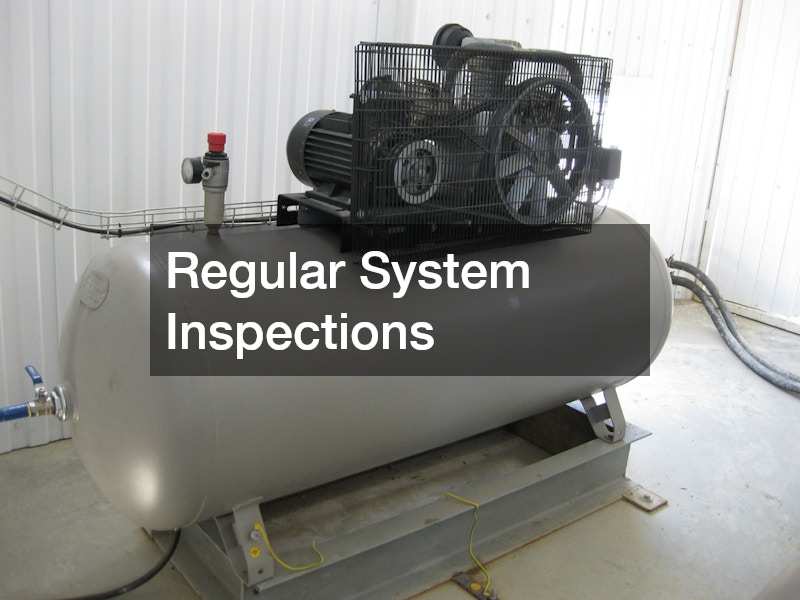When it comes to maintaining a healthy and efficient septic system, one of the most common challenges homeowners face is dealing with invasive tree roots. Grass tree roots can cause serious damage to your septic system if left unchecked, leading to clogs, leaks, and costly repairs. In this comprehensive guide, we will explore the risks that tree roots pose to your septic system and provide you with practical tips on how to prevent and manage this common issue.
Understanding the Risks

Septic cleaning is essential to prevent backups and ensure the proper functioning of your septic system. Grass tree roots can infiltrate your septic tank and leach field, causing blockages and hindering the flow of wastewater. Regular septic cleaning can help remove any tree roots that have made their way into your system, preventing potential damage and maintaining optimal performance.
It’s important to be proactive in addressing the issue of tree roots to avoid costly repairs down the line. In addition to septic cleaning, consider investing in preventive measures such as root barriers and proper tree selection to minimize the risk of root intrusion.
Ignoring the threat of tree roots can lead to significant issues with your septic system, including sewage backups, foul odors, and structural damage. By understanding the risks and taking proactive steps to address them, you can protect your septic system and avoid expensive repairs.
Recognizing Vulnerable Areas
Regular septic pumping service is crucial for preventing the buildup of solids in your septic tank that can attract tree roots. Grass tree roots are drawn to the nutrients and moisture present in the septic system, making it essential to keep your tank well-maintained and free of debris. By scheduling routine septic pumping service, you can minimize the risk of root intrusion and extend the lifespan of your septic system.
Identifying vulnerable areas around your septic system, such as the location of trees with aggressive root systems, can help you take proactive measures to protect your system. By working with a professional septic pumping service, you can assess the potential risks posed by nearby trees and implement strategies to mitigate root intrusion.
Regular inspections of your septic system can help you detect early signs of root intrusion and address them before they cause significant damage. By being proactive and vigilant in recognizing vulnerable areas around your septic system, you can prevent tree roots from compromising the integrity of your system.
Choosing the Right Trees
When it comes to maintaining a healthy septic system, the selection of trees in your yard can make a significant difference. Certain tree species, such as willows and maples, have aggressive root systems that are more likely to infiltrate your septic system. By choosing trees with less invasive root systems, such as dogwoods or redbuds, you can reduce the risk of root intrusion and protect your septic system.
Working with a professional lawn care service can help you make informed decisions about the types of trees to plant in your yard. By selecting trees that are suitable for your soil conditions and septic system requirements, you can create a landscape that enhances the beauty of your property while minimizing the risk of root intrusion.
Regular tree maintenance, including tree cutting service and pruning, can help limit the growth of roots near your septic system. By keeping trees in your yard well-maintained and properly spaced from your septic system, you can reduce the likelihood of root intrusion and preserve the health of your septic system.
Proper Tree Placement

Proper tree placement is essential for protecting your septic system from the threat of grass tree roots. Avoid planting trees within the proximity of your septic tank and leach field, as their roots can easily infiltrate the system and cause damage. By maintaining a safe distance between trees and your septic system, you can reduce the risk of root intrusion and ensure the longevity of your system.
Consider the mature size of trees when planting them near your septic system, as their root systems can expand over time and potentially reach your tank and leach field. By strategically positioning trees away from your septic system and ensuring adequate spacing between trees, you can prevent root intrusion and avoid costly repairs.
Consult with a professional tree trimming service to assess the existing trees on your property and determine if any pose a risk to your septic system. By working with experts in tree care and maintenance, you can develop a plan for proper tree placement that safeguards your septic system from tree roots.
Maintaining Healthy Trees
Regular tree cutting service is essential for maintaining the health and vitality of trees in your yard. Pruning trees can promote strong root growth and prevent the spread of invasive roots that can threaten your septic system. By investing in routine tree maintenance, you can ensure that your trees remain healthy and resilient, reducing the likelihood of root intrusion.
Tree trimming service can help control the growth of roots near your septic system, preventing them from causing damage to your tank and leach field. By keeping trees well-maintained and properly pruned, you can minimize the risk of root intrusion and protect the integrity of your septic system. Regular tree maintenance is key to preserving the health of your trees and preventing root-related issues that can compromise your septic system.
Regular tree care, including watering, fertilizing, and mulching, can help trees in your yard thrive and resist the pressures of invasive grass tree roots. By maintaining healthy trees, you can create a vibrant landscape that enhances the beauty of your property while safeguarding your septic system from potential damage.
Installing Root Barriers
When it comes to protecting your septic system from invasive tree roots, installing root barriers can be an effective solution. Root barriers are physical barriers that prevent tree roots from penetrating the soil around your septic system, reducing the risk of root intrusion. By installing root barriers around your septic tank and leach field, you can create a protective barrier that shields your system from the damaging effects of grass tree roots.
Root barriers are made of durable materials, such as plastic or metal, and can be installed underground to prevent tree roots from encroaching on your septic system. By working with a professional septic tank installation service, you can determine the appropriate type and placement of root barriers for your specific septic system needs. Root barriers are a cost-effective and long-lasting solution for protecting your septic system from the threat of invasive tree roots.
Regular maintenance of root barriers, including inspection and repair as needed, can ensure their effectiveness in preventing root intrusion. By investing in root barriers as part of your septic system protection plan, you can minimize the risk of damage from tree roots and enjoy peace of mind knowing that your system is well-protected.
Regular System Inspections

Scheduling regular septic inspections is crucial for detecting potential issues with your system, including root intrusion. Grass tree roots can infiltrate your septic system over time, leading to clogs and blockages that impede the flow of wastewater. By conducting routine inspections of your septic system, you can identify signs of root intrusion early on and address them before they cause significant damage.
Professional septic repair service can help you address any root-related issues that are discovered during inspections, such as blockages or leaks in your system. By working with experienced technicians, you can receive expert guidance on how to mitigate the effects of tree roots on your septic system and prevent future problems. Regular system inspections are an essential part of maintaining a healthy and functional septic system, enabling you to detect and address root intrusion before it escalates.
Regular septic system pumping is another critical aspect of system maintenance that can help remove any tree roots that have infiltrated your system. By scheduling routine pumping service, you can prevent root intrusion from causing damage to your system and ensure that it operates at peak efficiency. Investing in regular inspections and maintenance of your septic system is key to protecting it from the threat of tree roots and extending its lifespan.
Managing Drainage Around the Septic System
Proper drainage around your septic system is essential for preventing water accumulation that can attract grass tree roots. Excess moisture in the soil around your septic tank and leach field can create an ideal environment for root growth, increasing the risk of intrusion. By implementing effective drainage solutions, you can ensure that water is directed away from your septic system and reduce the likelihood of root infiltration.
Professional septic system pumping can help address any drainage issues that may be contributing to root intrusion around your system. By removing excess water and waste from your septic tank, you can prevent the buildup of roots that can clog your system and cause damage. Managing drainage around your septic system is essential for protecting it from the threat of tree roots and maintaining its optimal performance.
Regular maintenance of your drainage system, including clearing debris and inspecting for clogs, can help prevent water-related issues that attract tree roots. By keeping your drainage system in good working order, you can minimize the risk of root intrusion and ensure that your septic system remains healthy and functional. Proper management of drainage around your septic system is key to protecting it from the damaging effects of invasive tree roots.
Utilizing Ground Covers
Ground covers are an effective landscaping solution for reducing the risk of grass tree roots infiltrating your septic system. Planting ground covers, such as grasses or low-growing shrubs, around your septic tank and leach field can create a barrier that prevents root intrusion. By utilizing ground covers in strategic locations, you can protect your septic system from the damaging effects of invasive tree roots.
Ground covers are low-maintenance and can help stabilize soil around your septic system, reducing the likelihood of erosion and root infiltration. By choosing ground covers that are well-suited to your soil conditions and climate, you can create a protective layer that shields your septic system from the threat of tree roots. Planting ground covers is a cost-effective and environmentally friendly way to enhance the health and longevity of your septic system.
Regular maintenance of ground covers, including watering and weeding, can help ensure their effectiveness in preventing root intrusion. By incorporating ground covers into your landscaping plan, you can create a beautiful and functional landscape that minimizes the risk of damage from tree roots. Utilizing ground covers is a simple yet effective strategy for protecting your septic system and preserving its integrity.
Professional Assistance
When it comes to protecting your septic system from the threat of tree roots, working with professional septic cleaning and maintenance services is essential. Experienced technicians can help assess the condition of your system, identify potential risks, and implement effective solutions to prevent root intrusion. By partnering with professionals in septic cleaning, pumping, and repair, you can safeguard your system from the damaging effects of invasive tree roots.
Professional septic pumping service can help remove any tree roots that have infiltrated your system, preventing blockages and ensuring optimal performance. By scheduling routine maintenance with a reputable septic pumping service, you can prolong the lifespan of your septic system and protect it from root-related issues. Investing in professional assistance for your septic system is a smart decision that can save you time, money, and stress in the long run.
Experienced technicians can provide expert advice on how to protect your septic system from grass tree roots and recommend preventive measures to minimize the risk of root intrusion. By working with professionals who specialize in septic system maintenance, you can receive personalized solutions that address the unique needs of your system. Trusting your septic system to skilled professionals is key to ensuring its longevity and functionality in the face of potential threats.
Long-Term Strategies

Developing long-term strategies for protecting your septic system from grass tree roots is essential for ensuring its continued health and functionality. By implementing preventive measures, such as regular maintenance, root barriers, and proper tree selection, you can reduce the risk of root intrusion and prolong the lifespan of your system. Investing in long-term strategies for septic system protection is a wise decision that can pay off in the form of a reliable and efficient system.
Regular inspections and maintenance of your septic system are key components of long-term strategies for preventing root intrusion and preserving system integrity. By staying vigilant and proactive in addressing potential risks, you can minimize the likelihood of costly repairs and ensure the long-term health of your system. Developing a comprehensive plan for septic system protection that includes regular maintenance and professional assistance is an investment in the future of your home.
By incorporating best practices and proven strategies for protecting your septic system from tree roots, you can enjoy peace of mind knowing that your system is well-protected and functioning optimally. By staying informed and proactive in addressing potential risks, you can avoid the headaches and expenses associated with root-related issues and maintain a healthy and efficient septic system for years to come. Implementing long-term strategies for septic system protection is a smart decision that will benefit you and your home in the long run.
Protecting your septic system from the threat of tree roots requires a combination of preventive measures, regular maintenance, and professional assistance. By understanding the risks that grass tree roots pose to your system and implementing strategies to prevent root intrusion, you can safeguard your system from potential damage and ensure its continued functionality. Whether it’s through proper tree selection, regular maintenance, or professional septic services, taking proactive steps to protect your septic system is essential for its longevity and reliability. By following the tips and recommendations outlined in this guide, you can enjoy peace of mind knowing that your septic system is well-protected from the damaging effects of invasive tree roots.


